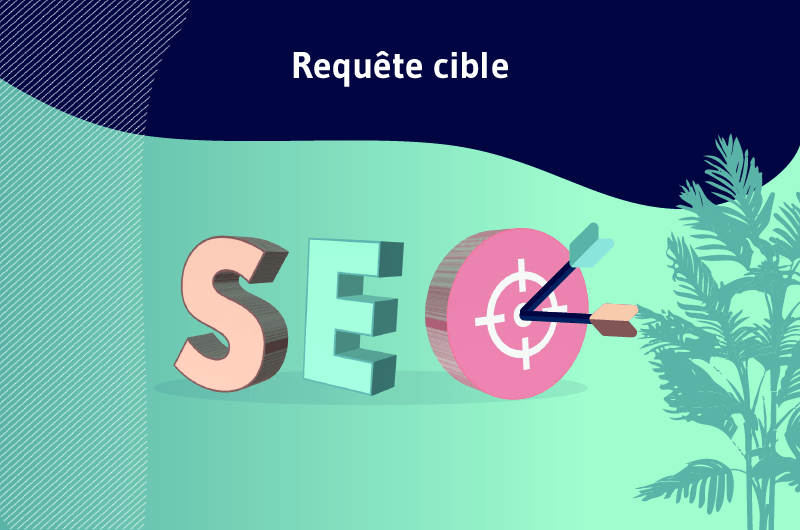A target query is the main keyword (or phrase) for which website owners want to rank well in the first SERP of search engines. Thus, when users type in this specific keyword, the page in question should easily appear at the top of the SERP. In other words, it’s the phrase that exactly or almost exactly matches your audience’s search intent.
Ranking high in the search results is a task that requires a lot of effort and can sometimes be a probability. To do this, it is important to rank for specific queries.
Despite the automatic learning of search engines, they sometimes fail to distinguish the true meaning of certain queries because they do not have a psychic faculty.
In this case, they simply rely on the keywords contained in the query to display search results pages somewhat vaguely.
But when they notice a specificity in the searcher’s query, they know how to direct the display of results to directly answer the user’s query.
To better understand what a target query is, I invite you to continue reading this mini-guide.
Let’s start!
Chapter 1: What does target query mean and what are the different types that exist?
First, we can start by saying that there is no such thing as a target query when we are not talking about search intent.
Apparently, these two expressions may seem different, but in fact, they depend on each other to make sense.
1.1) What is a target query?
The target query is the user’s search intent when trying to type a query into a search engine.
In most cases, when users type something into Google, they expect a specific type of result
Since Google is constantly trying to provide the best possible experience, it uses every possible means to provide a result that actually matches the user’s search with the target query.
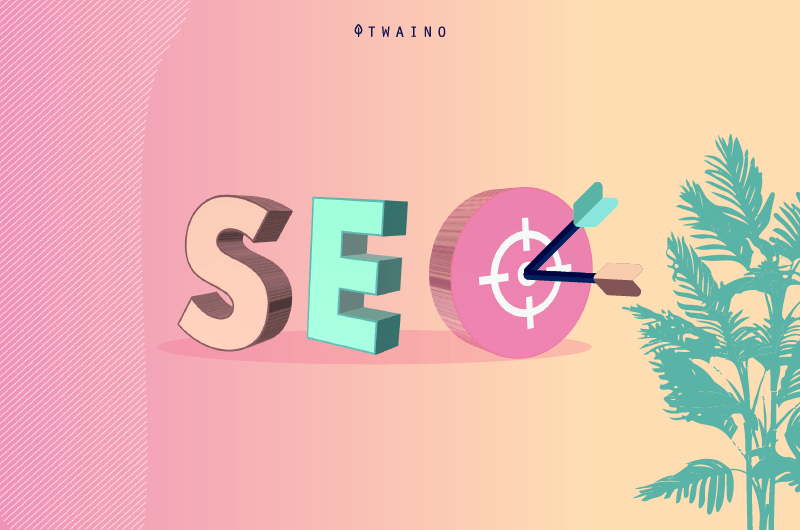
Google’s goal is to rank the pages that are most relevant to the user’s intent or goal. To that end, it uses search intent to help categorize queries and deliver the most useful results.
Understanding search intent requires a bit more depth than just knowing what your audience is looking for, it requires understanding exactly why they are looking for it.
1.2. The different types of target queries
Even though Google recognizes target queries, before displaying the results, it classifies them into four different categories.
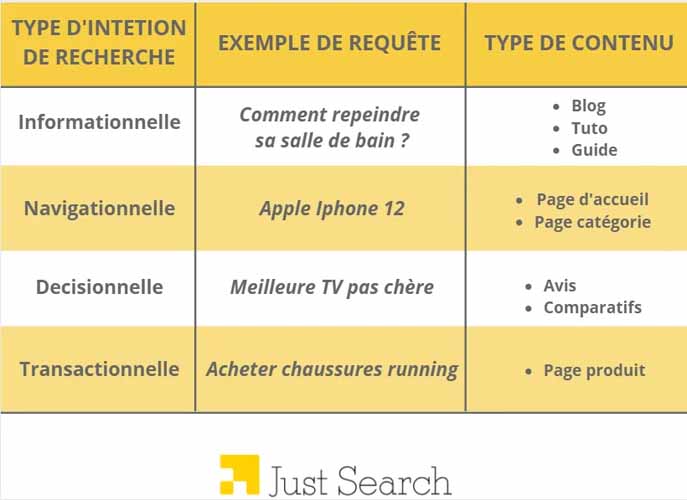
Source: Just search
1.2.1. Information queries
When search engines identify an intent to obtain facts, data and knowledge in a user’s query, they classify the query as an information search.
For simple and popular information searches, Google displays the direct answer on the topic in addition to the usual list of search results.
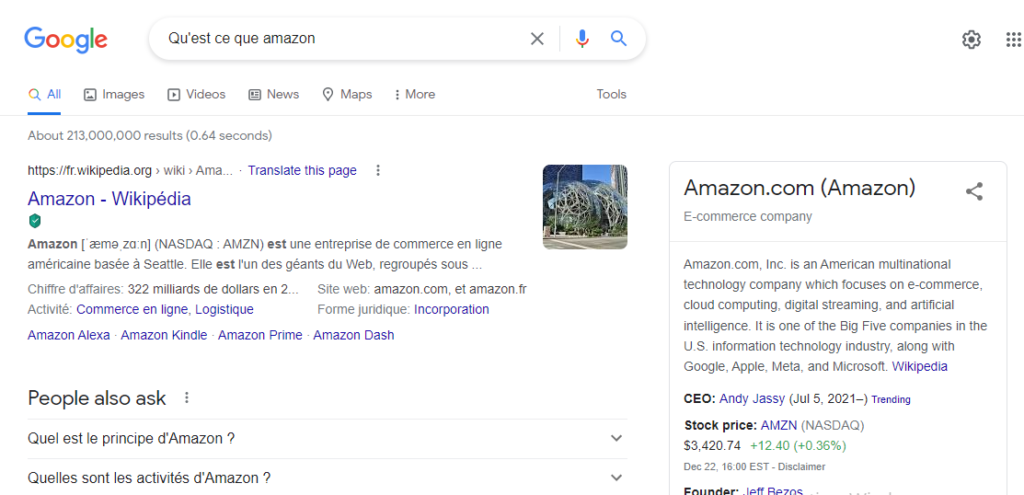
As other examples of information query, we can see
- Best gaming laptop 2021;
- When did fortnite come out?
Sometimes information queries don’t start with interrogative words like how, when, why and others
Even if the user does not include the interrogative words, search engines may recognize the query as an information search.
When a user enters such a query, his or her intentions are clear, but it is still unclear at what stage of the buying process that user is, or if he or she is actually considering making a purchase.
This type of query is becoming increasingly popular, so websites often target it by providing tips, guides, recommendations, information summaries, etc.
Information queries can offer you a good opportunity to find interesting topics that can drive traffic to your site
However, as mentioned above, you have to keep in mind that a visitor may only be looking for information and not have any real intention to make a purchase.
You can try to convert a visit into a purchase by placing a call to action in the informational article or by offering items that the visitor may need to use in the information obtained
For example, if you sell running clothes, you can write an article about popular marathons and mention the best running shoes for that type of activity.
1.2.2. Navigation queries
Browsing qu eries are used to find information about specific brands, products and services.
This type of search query is also called a go query. For this type, users already know where they want to go, and try to locate a specific website.
When using a browse query, the customer uses a known search term rather than typing the exact URL of the website
These types of queries typically include a brand-specific term and may include navigation words.
For example, you can type ”WHO” into the Google search bar to quickly access the World Health Organization’s website.
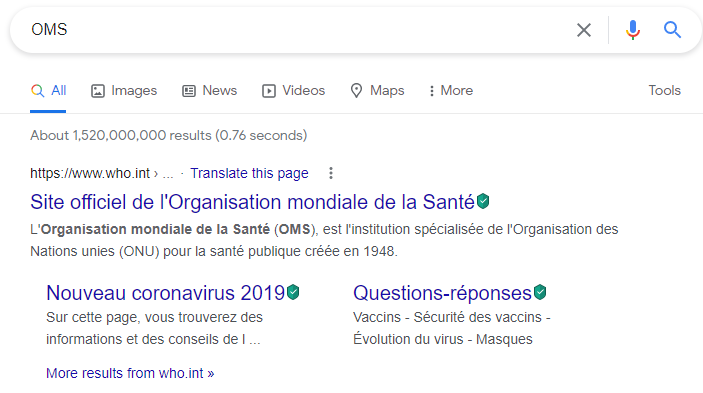
People often use navigation queries, even for popular and well-known brands, products and services
The queries ”facebook” and ”youtube” are the top two searches on Google. People even search for ”Google” in Google, it appears in the top 5 search queries.
Other examples of browsing queries include:
- Buy Nike running clothes;
- Directions to the Eiffel Tower
1.2.3. Transactional Query
Transactional searches occur when people intend to complete a transaction. These searches are the query to target, as searchers want to do something once they arrive at the desired destination
They can be very specific and include brand names, prices, model names and even words like ”buy”.
As an example:
- iPhone X;
- Buy a Nespresso machine.
Or transactional searches can be something more general like:
- 4K TV;
- Coffee maker;
- Laptop.
However, these types of searches are not limited to purchases. It could be downloading a PDF or signing up for a consultation. In all cases, the transactional query expresses the intent to have some sort of interaction.
You should try to rank for these searches, as they are closest to the end of the buyer’s conversion funnel
Apply all the basics of SEO, such as using the keywords for these queries on your website pages. Try to rank organically for this type of search query.
1.2.4. Commercial Query
Like any other industry, the commercial sector has undergone a progressively remarkable transformation due to the advent of the Internet
As a result, marketers and businesses of all sizes are relying on the Internet to reach customers via paid advertising
Hence, the need for SEO agencies and businesses to choose words for paid advertising campaigns.
In simple terms, business search queries are search terms used in paid advertising strategies
Whether an online business considers a given query commercial depends mainly on the niche of the site or brand
For example, if your site sells hotel reservations, the search query “request a ride” is not a keyword to include in your paid advertising campaign.
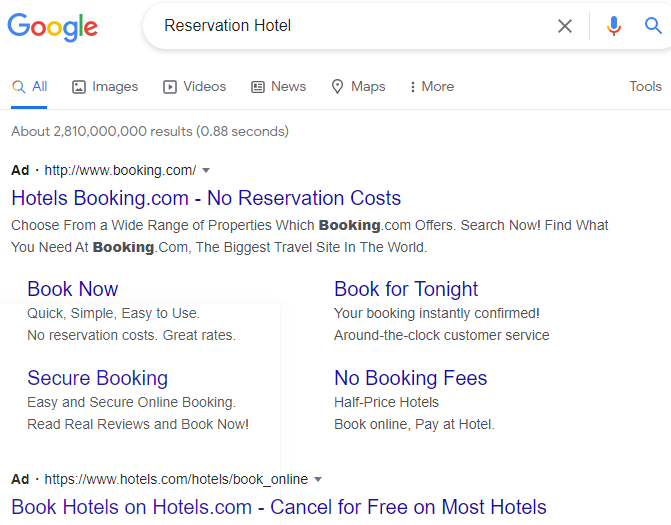
If you have a site that provides your audience with free travel tips and advice, but generates revenue through ads, targeting commercial search queries in this niche may be a good idea.
1.3. Target query & Google BERT
BERT is a natural language processing framework built by Google to allow bots to better understand the nuances of human language. It is now used as the company’s search algorithm.
This algorithm has the ability to recognize the different ways in which words in a query can interact. Thus, it derives a precise meaning and context.
In short, BERT is used to understand the true intent of a query.
It’s so important to stay focused on search intent, as Google’s algorithm continues to strengthen its capabilities with NLP models
So you need to understand your audience and what they are searching for as much as Google does, because being on the same page with Google is the only way to get on the first page of results.
Simply put, Google is getting smarter and smarter, and we need to keep up with it.
Chapter 2: How to properly use a target query?
Using a target query to satisfy your audience’s intent could be a great asset for businesses.
Here are some tips to follow:
2.1. Anticipate your users’ search intent
In every query that passes through the search engine every day, there is an intention.

In every case, the intention of an individual who visits a search engine is to find a website whose content meets his needs.
When the searcher arrives in the search results, he will probably click on the first site, because it is the one that seems closer to his query.
So when you offer highly relevant content that targets their query globally and provides very specific answers, you will be one step ahead of your competitors. It will also increase your chance of being considered an authority in your field.
By doing so, you anticipate your users’ search intent and react accordingly to make their user experience positive and rewarding.
According to experts, search intent optimization is based on the concept of supply and demand.
By providing relevant content that responds to the demands, i.e. the target queries of your audience, you will in turn benefit from a positive action from them.
In fact, this helps maximize content engagement, because due to the satisfaction of your users’ wishes as well as goals, they will stay on the site longer. Moreover, they will not hesitate to go even further than the original page they landed on.
By analyzing your target customer’s search engine query, you can learn more about their search intent
When you know their search intent, you know what type of content will work best for them and help you convert them
Understanding their search intent is the easiest way to ensure content engagement, increase user interest, make their experience more positive and reduce bounce rates.
2.2. Write content that targets your audience’s query intent
When your content targets specific search terms, you attract a relevant audience to your website.
Plus, by providing content that targets your visitors’ intent, you make things easier for Google and it will reward you in return.
This helps the search engine achieve its goal of providing the most effective results to users.
The higher the quality of your target query optimization, the higher your ranking will be, because you will have proven that you are a reliable and powerful source of information
In addition, your website will rank in search engines for specific keywords related to your product or service
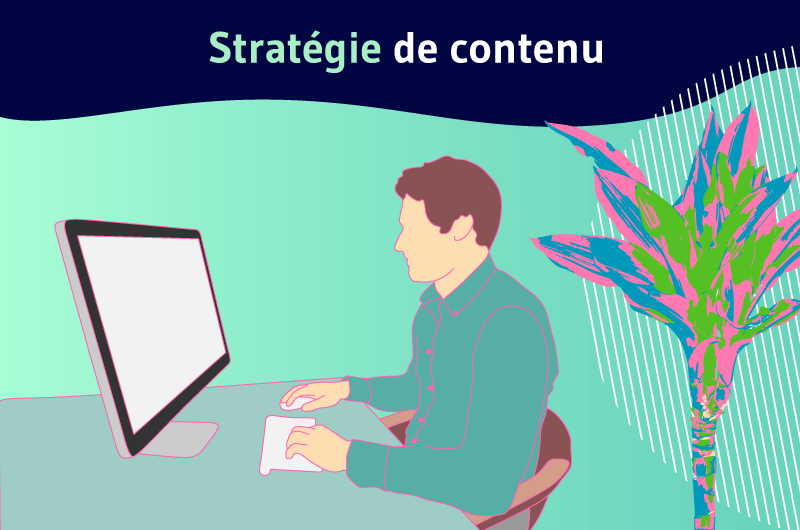
But the most important factor is that you attract visitors at the right time and at the right place for your content.
Anticipating a user’s query intent is critical to your success, and when your content aligns correctly with their needs, you also anticipate the most important steps in their buying journey
On the other hand, content that ranks high in the SERPs is more visited, and this will give you a greater chance to prove your worth.
It should also be noted that you should not do as some companies that are obsessed with ranking for so many search terms and naturally neglect search intent
They focus solely on rankings and visibility at the expense of anticipated search intent and ultimately end up with high bounce rates.
The reason is that users don’t find what they’re really looking for and therefore don’t engage with their content.
Providing consumers with exactly what they need, just when they need it, is what you should be aiming for.
2.3. don’t ignore Google’s ability to predict search intent
With the evolution of machine learning, search engines can understand as quickly as possible what a searcher is trying to achieve during a search
In fact, understanding and applying search intent allows search engines to maintain their informational status by providing users with fast and relevant search results.
Many may believe that search intent is a brand new idea that the geniuses at Google have developed
In truth, it’s a trending key phrase used by other marketers, but it existed under the name of ”semantics,” which means the meaning of a word or phrase.
Prior to 2013, Google’s search algorithm relied primarily on connecting the keywords in a searcher’s query to the text on a web page
This then led to the practice of Keyword Stuffing. A practice of implementing multiple keywords on websites to influence Google’s rankings.
In that same year, Google released the Hummingbird update and the search landscape began to change.
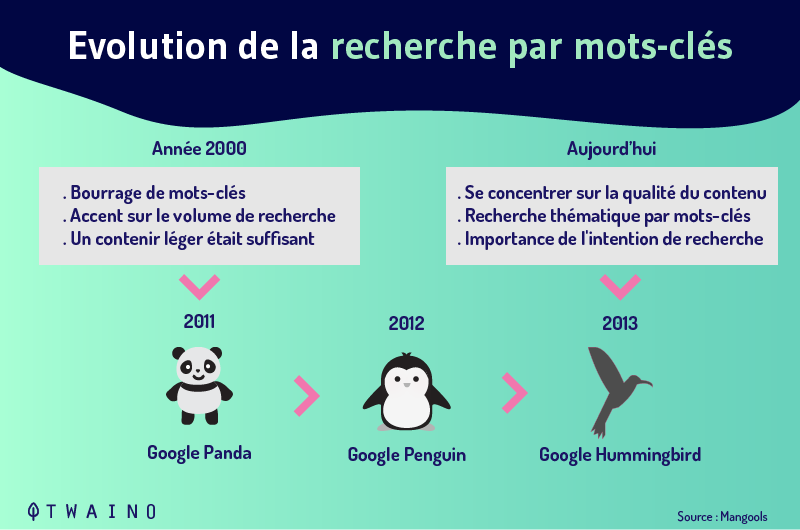
To this was added RankBrain in 2015, which provided Google with the means to determine user intent through machine learning
At this point, keyword volume was no longer the critical factor in ranking content. What Google values most now is the ability of your content to meet the needs of their users and provide a valuable source of information.
Subsequent updates and the implementation of more advanced tools have helped Google better understand the true meaning and intent of the words we type into search engines
Rather than simply matching keywords to content, Google has the ability to predict search intent in order to provide users with the most rewarding experience possible.
If your content fails to target your target audience’s queries, it simply won’t appear at the top of the search results page.
The goal of search intent is to align Google’s goals with yours
With that in mind, you can produce content targeted to the search intent and keywords most relevant to your audience
This way, when Google predicts search intent, your content will appear in the first SERP.
2.4. Work with search intent for business queries
While each person and their search intent is unique, there are 4 different types of target queries.
When a person starts searching the search engines, they are definitely using one of these target query types.
Regardless of the type of target query the user may use, Google’s only goal is to first understand why they are searching and then what result they should expect.
Even so, the type of target query your content should be based on will depend on your business objective.
In most cases, the queries typed by users in search engines are informative.
As mentioned above, this type of query often starts with ”when, how, what, etc.” or it may not be in this posture.
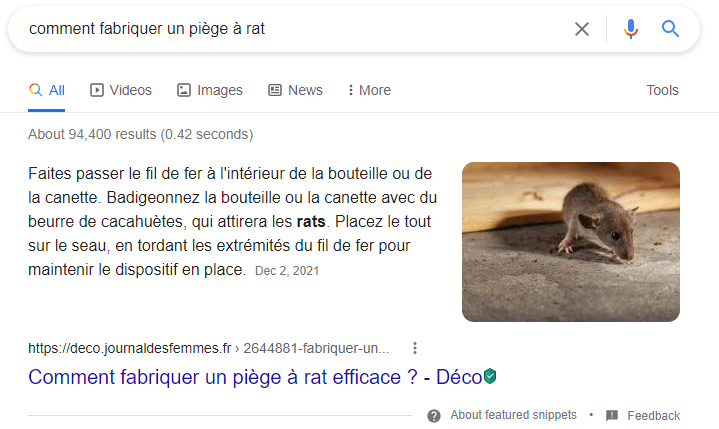
Google takes care of this by providing objective and very precise results.
As far as transactional queries are concerned, we mentioned above that they indicate when a user wants to buy a product or request a service
The key factor to note here is that these search queries often mean that a user is already in the purchase stage of their journey
With that in mind, it’s essential to optimize transactional intent if commerce is your goal. The user already wants to buy, it’s your job to make sure your content makes you the seller they come across and can rely on.
As for the commerce query, it finds its place when the user is looking to make a purchase, but is not fully committed to a specific product or service.
This query may be related to the intent to make a comparison or find content about specific products
As they are still evaluating their options, these users are looking for additional information, reviews, comparisons, and insights to help inform their purchase or order.
2.5. Use SERPs to establish target search intent
You can use search engine results pages (SERPs) to indicate the intent of a particular search
This completely covers the initial search journey and search intent of a user until the result is obtained.
This way the user can actually benefit from said search by discovering the perfect search result page for their query.
As we know, Google strives to respond to user queries with the most relevant content as quickly as possible
This means that the results pages are full of content that reflects what most searchers might be looking for on the internet.
Therefore, you may assume that the best course of action is to try to rank for the most obvious keywords that meet your needs
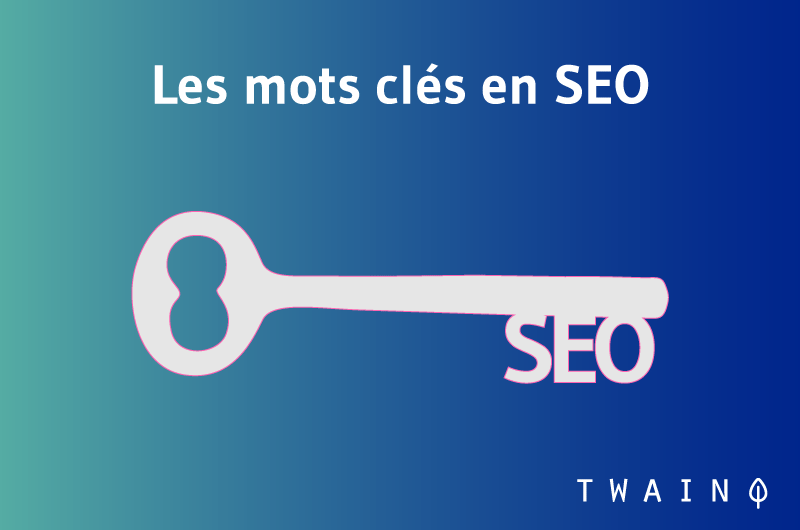
For example, if you are a boxing glove retailer, you might think that the best keywords to target would be ”boxing gloves”.
Broad terms like this have no identifying intent in the choice of word, and there is no way to know what a user’s intent is when they type in a keyword like ”boxing gloves”
Google does not know either, it is a very intelligent search engine, but it has not yet developed this psychic ability.
Since it can’t identify the exact search intent, Google provides a wide range of content that covers all the bases of the query
Using the SERPs and analyzing the various Google features is a great way to find out what type of queries users are searching for
This offers the advantage of getting a better idea of their search intent and matching your content accordingly.
Some people will search with informational or commercial intent
That’s why, in addition to shopping suggestions, Google also offers users suggestions for the most requested queries
This suggestion feature works to refine a user’s search based on an analysis of the search habits of previous users who have performed the same or similar action.
To better understand the context of search intent, let’s take a look back at our target query types and how using additional keywords will help you strengthen the intent of your content
To do this, we’ll use the additional keywords for “boxing gloves” to show how you can focus your content on a specific query.
2.5.1. Informational query
Keywords such as ”history of boxing gloves”, ”how boxing gloves are made” show an intention to find more information about boxing gloves
This precision means that the results pages are displayed with very targeted content instead of a very vague SERP.
2.5.2. Transactional query
Although the phrase ”boxing gloves” may give the impression that it is purely transactional in intent, this is not entirely obvious
On the other hand, keywords such as ”cheap boxing gloves”, ”sale of boxing gloves” are much more specific and clearly indicate the purchase intention
In the latter case, the user will be presented with relevant business websites.
2.5.3. Commercial request
Just like transactional intent, commercial query style content often consists of broader keywords to help potential buyers
Words such as ”best”, ”what” and ”who” reveal that the user is searching for a business query.
Examples
- best boxing gloves 2021
- the 10 best boxing gloves for beginners
2.6. Use location data
Entering a location in the search query reveals that the user is searching with a location-based intent.
Location-based intent is probably the easiest to interpret and use, as you only need to target the locations where your business is based or served
For example ”boxing gloves near me”, ”boxing gloves in Paris”.
Whatever your goals, search intent is a critical factor at every level
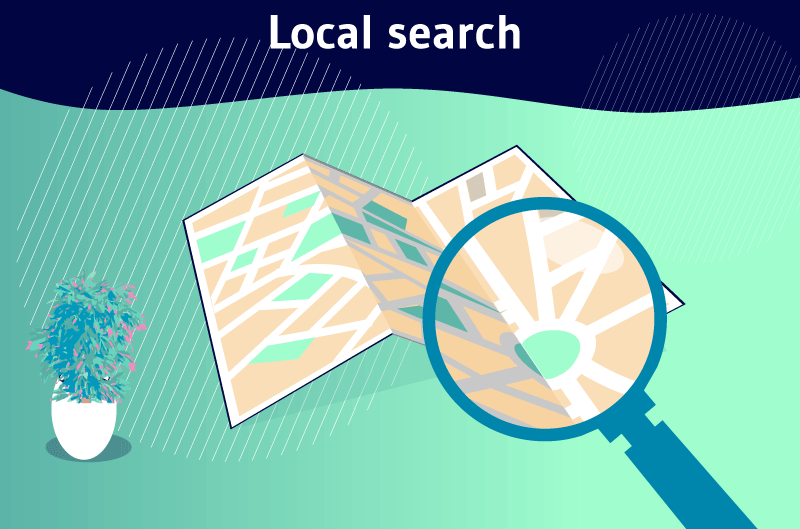
Each type of search intent and the context in which you use it has huge benefits for marketing a business.
For example:
- Informational intent demonstrates your knowledge and increases your brand reputation;
- Transactional intent sends customers where they need to be when they need to be there;
- Business inquiry intent informs potential customers and allows them to make a more informed purchase.
Location-based intent is vital for local SEO and local businesses in general
When users in your area need a product or service you offer, Search Intent helps connect customers to your business.
2.7. Think about search intent versus buyer persona
Search intent not only helps customers get to relevant content faster, it also helps you better understand their needs and motivations
As previously mentioned, context is key when it comes to researching the best keywords
In order for your search intent campaign to be targeted, you need to understand who your audience is, what they need, and use that information to segment them based on your marketing goals.
This is where the buyer persona comes in. To make sure you’re targeting the right people, it’s always a good idea to create a persona from scratch, the perfect person who would be interested in your website.
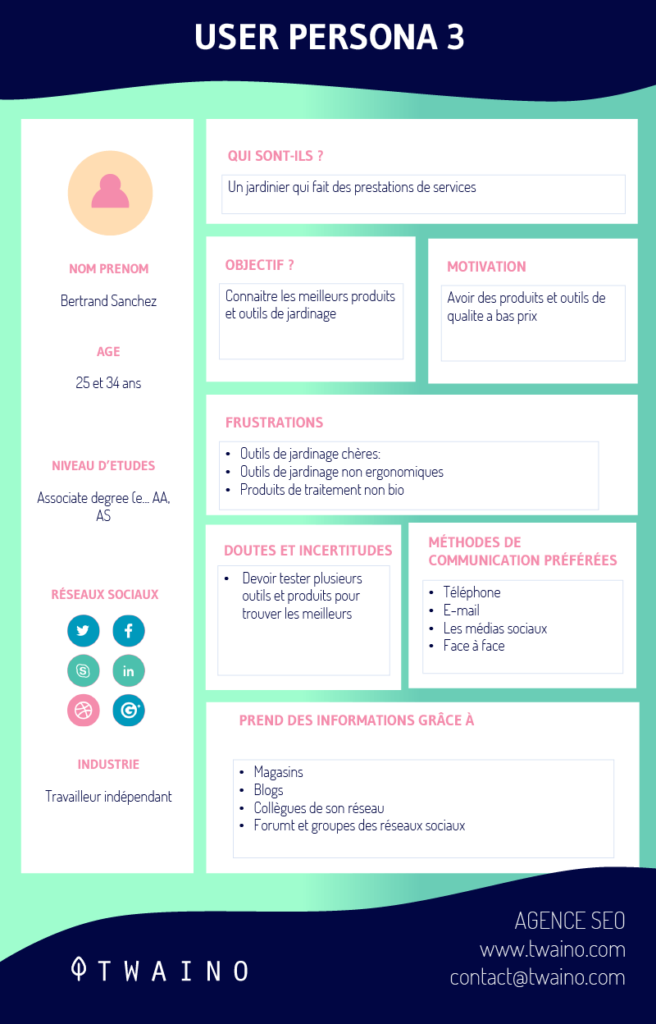
While you have a good idea of who your target audience is, you should never make assumptions about the type of people who are engaged by your content
Because if you miss the mark, it will hurt the effectiveness of your marketing efforts
By segmenting users into customer groups based on their similarities, you have the foundation for a buyer persona
This often includes determining factors such as:
- Age;
- Gender;
- Career;
- Income;
- Location;
- Buying habits.
However, these are just a few examples of the type of basic information that can be used to create marketing personas
Depending on the nature of your search intent campaign and your goals, the information you collect can be much more detailed.
Personas are a fictional representation of a company’s ideal customer, created using the traits and characteristics discovered when you segment your audience
With this information, you are much better equipped to understand your target audience and provide them with exactly what they need at each stage of the buying journey
This is essential knowledge for marketers, as it tells them more about the style of approach that might be most effective
Search intent is critical at this stage, as it provides multiple opportunities for creativity in how you approach content
In the case of ”boxing gloves,” we can understand that the customer searching with a business inquiry intent has just started boxing
So, informative content about boxing tips for beginners could also be extremely beneficial for engagement.
When you group consumers into segments, you quickly develop a clearer understanding of the types of searches they do at each stage of their buying journey
This tells you a lot about the language your ideal customers use and also about their specific intentions.
With this in mind, you have the template to create relevant and effective strategies to meet the needs of customers in all your new segments
Reflect the target audience at each stage of the buyer’s journey and you will be able to make your content attention-worthy and increase engagement.
2.8. Choose the right keywords for the search intent
Choosing the right keywords is a determining factor in the success or failure of your search intent campaign
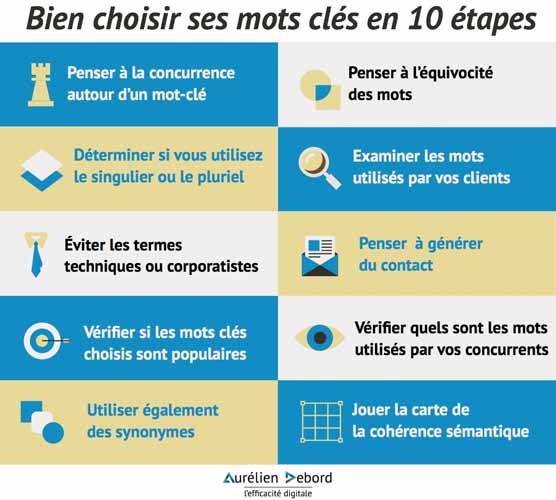
Source: Edge Agency
So it’s always a good idea to use all the tools at your disposal to make your content as powerful as possible.
Below, we’ll highlight different ways to establish the best keywords for your search intent strategy.
Step One: Initial Keyword Research
There are several ways to research keywords. Here are a few
- Google Suggestions
One of Google’s most useful, but often less used tools is the keyword suggestions it offers. By entering various keywords into a Google search, you instantly get a range of suggested keywords
The key thing to keep in mind here is that if Google suggests these keywords, other people have searched for them. Not only that, these are keywords that have been used recently and in volume, which means they are ideal candidates for content keywords
Once you’ve found your specific search term, the next thing to analyze is the type of content that is currently being promoted to the top of the results page
This top content can let you know what Google has prioritized as the most important, relevant and useful to the searcher
This will help you focus on certain keywords or eliminate them if their search intent doesn’t match your campaign’s goal.
- Competitive Analysis
Every marketing campaign benefits from competitor analysis, and search intent is no different. If your competitors are ranking for the right keywords for their target query goals, it’s worth looking at how they did to do better.
A close look at the top-ranked competitor’s page gives you decent insight into what they are doing to tell Google that their content is the most relevant to the searcher
Once you have this knowledge, you can look for ways to improve and further optimize your content to rank higher than your competitors.
- The ”Other Questions Asked” feature
Another simple yet effective way to further define keywords is the ”Other Questions Asked” feature
Google has recognized that not all users search with transactional intent and may not be satisfied with the content initially provided by the results page
To counter this, it has provided a shortcut for users to find other information content that may better meet their needs: the “Other Questions Asked” section.
These are questions regularly asked by researchers that are relevant to the user’s query
You can go beyond what is already available to provide more compelling content for the searcher.
- Related searches:
This is another ideal feature located at the bottom of the Google results page. Often ignored by most searchers, these suggested searches can offer a good idea of popular keywords to target
The suggestions you’ll find here can offer a base of keyword ideas. All you have to do is click on a suggested search term, then scroll down to the next page for more suggested search terms
By repeating the process, you can create a keyword bank. This, combined with the other methods above, helps you compile a comprehensive list of keywords relevant to your business and drive traffic to your content
- Keyword Research Tools:
The most effective way to find the best keywords for your audience’s search intent is by using SEO keyword research tools. There are several of them, both paid and free.
Here are some free ones you can use
- Google Trends;
- Ubersuggest;
- Google Instant Autocompletion;
- Google Search Console;
- Answer the public;
- Keywordtool;
- Kwfinder;
- Etc.
Step Two: Keyword Analysis
Now that you have a complete list in front of you, it’s time to analyze the value of each keyword to determine which of them will be most useful to you in achieving your brand goals.
A great way to start is to put your keywords in a spreadsheet and rank them by search volume.
The higher the monthly search volume, the better it can help you.
To do this, you’ll find online tools like SEMrush and Google Adwords very helpful, and they’re also pretty simple to use.
Next, it would be helpful to know if your competitors are using keywords that you want to rank for
If so, you need to determine how difficult it is for you to compete and rank higher for those keywords.
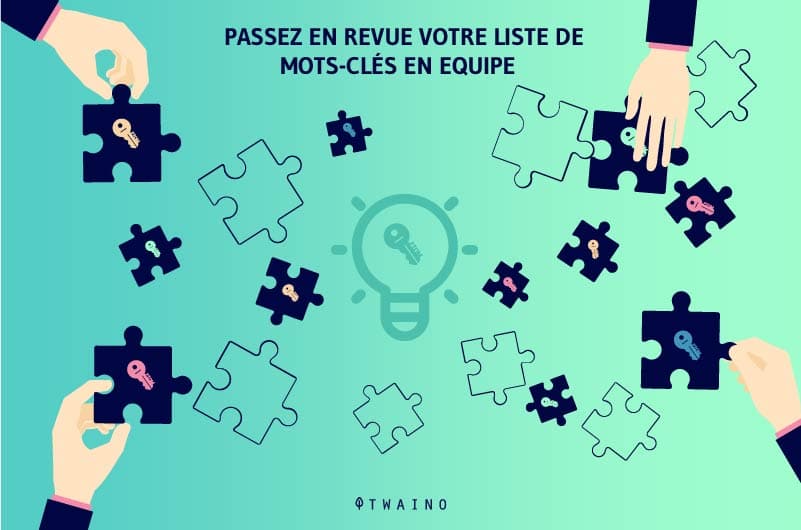
Using SEO analysis tools such as Ahrefs, you can analyze your competitors’ website pages to see where keywords are being used and get vital information about them, such as:
- Search volume
- Traffic and difficulty ranking.
This is a vital step in keyword analysis, as it prevents you from wasting time and effort on hard-to-rank keywords
Even if these keywords are incredibly relevant to your brand or target audience, in most cases, you’re better off investing your time and effort into keywords where you can make a bigger impact.
Step Three: Identify Search Intent
Now that you have a clearer idea of the value of your target keywords and which ones best suit your needs, the next step in the analysis is to identify the search intent behind the keywords.
When you categorize keywords by search intent, it tells you how to use them most effectively and what types of content are best suited for specific keywords.
Using your new list of high-value keywords, you can start creating highly specific content to meet the needs of your audience and increase your chances of converting them into customers.
In summary
The target query, being the phrase or sentence that similarly or exactly matches the user’s search intent, allows web marketers to target a very specific audience and leverage the competition.
On the user’s side, the target query allows him to find the almost or exact answer to his concern
In addition to that, the target query has several advantages from the SEO point of view and the growth of a company.
To make the most of its use, we have provided in this content the best practices to consider.
If you have any other ways to use a target query, feel free to share them with us in the comments.
Thanks and see you soon!

